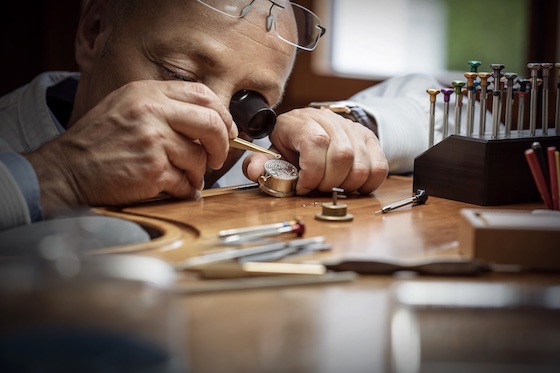
Last December, UNESCO officially registered craftsmanship of mechanical watchmaking and art mechanics on the Representative List of the Intangible Cultural Heritage of Humanity.
This inscription highlights a living tradition emblematic of the Franco-Swiss Jura Arc. The nomination, submitted by Switzerland in collaboration with France, was considered exemplary by UNESCO for its highlighting of the importance of intangible cultural heritage in a cross-border area.
Craftsmanship of mechanical watchmaking and art mechanics includes the watchmaking artisanal skills exercised along the Jura Arc from Geneva to Schaffhausen and from Biel to Besançon, as well as the production of automata and music boxes, characteristic of the Sainte-Croix region. At the crossroads of science, art and technology, this expertise combines individual and collective, theoretical and practical skills in the field of mechanics and micromechanics. In this Franco-Swiss area, a wide variety of artisans, companies, schools, museums and associations promote and pass on these manual techniques, which are both traditional and innovative. While craftsmanship of mechanical watchmaking and art mechanics serves a primarily economic function, it has also shaped the daily social reality of the regions concerned as well as their architecture and urban planning. This recognition of know-how also demonstrates the complementarity and continuity between intangible and tangible heritage, as the watchmaking town-planning of La Chaux-de-Fonds and Le Locle was listed as a UNESCO World Heritage Site in 2009.
The Swiss watch and clock industry appeared in Geneva in the middle of the 16th century. In 1541, the reformer Jean Calvin, by banning the wearing of ornamental objects, in effect forced goldsmiths and other jewellers to turn to a different art: that of watchmaking. By the end of the century, Geneva had already acquired a reputation for excellence and in 1601 the Watchmakers Guild of Geneva was established, the first of its kind in the world. A century later, because the city had “too many” watchmakers, many started leaving the Geneva region to set up business in the Jura mountains.
(This article is partly re-edited by FH Tokyo center. Please refer here for the original text in English and French.)
February 16, 2021


 News
News